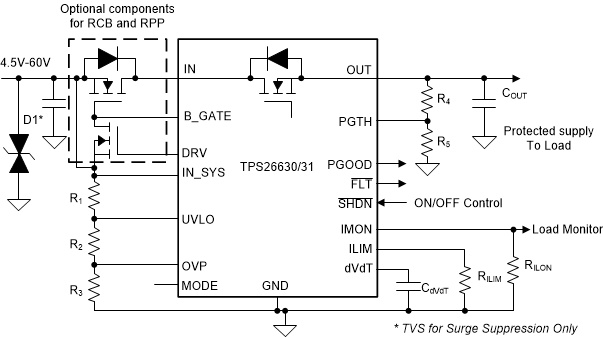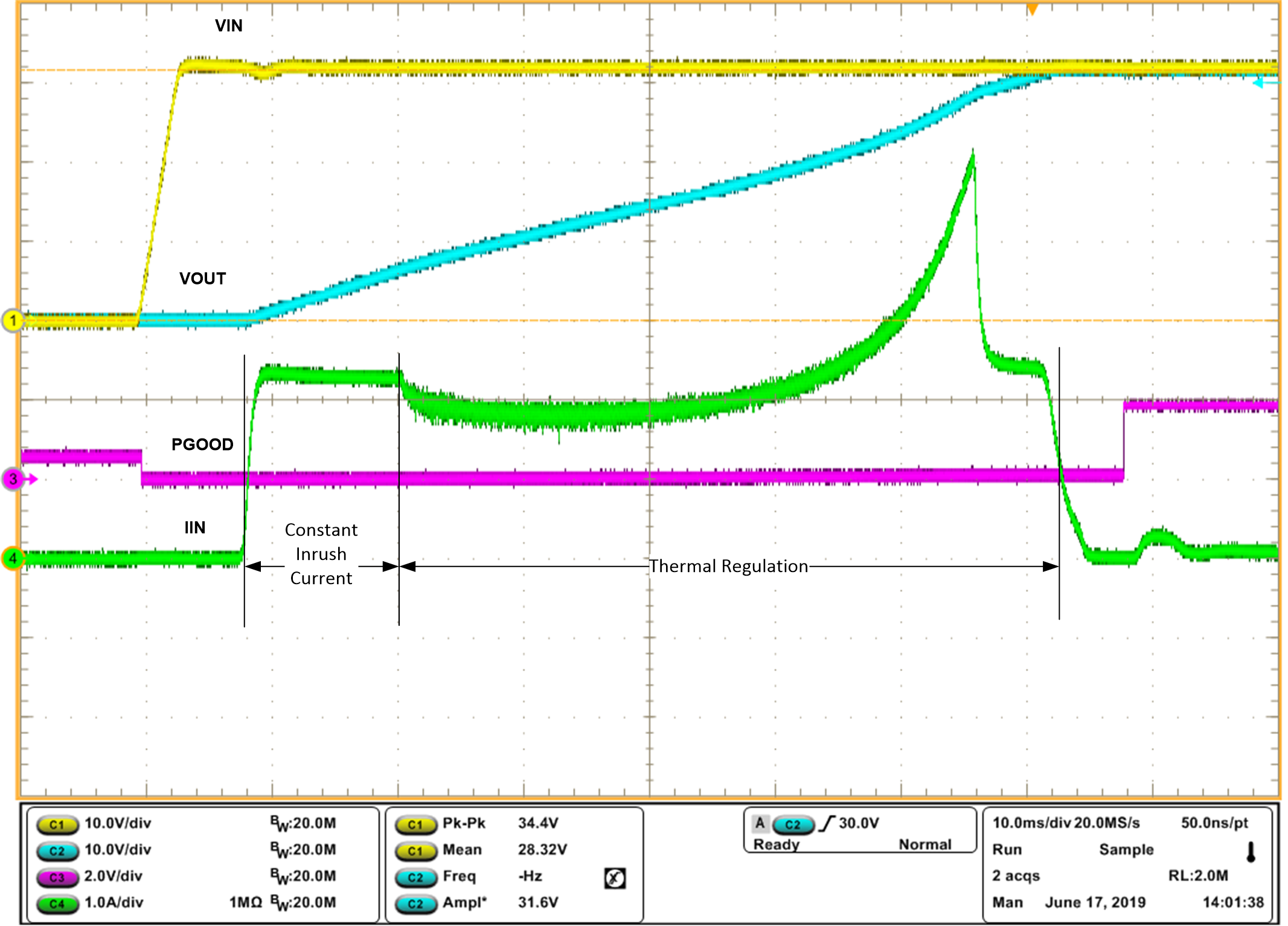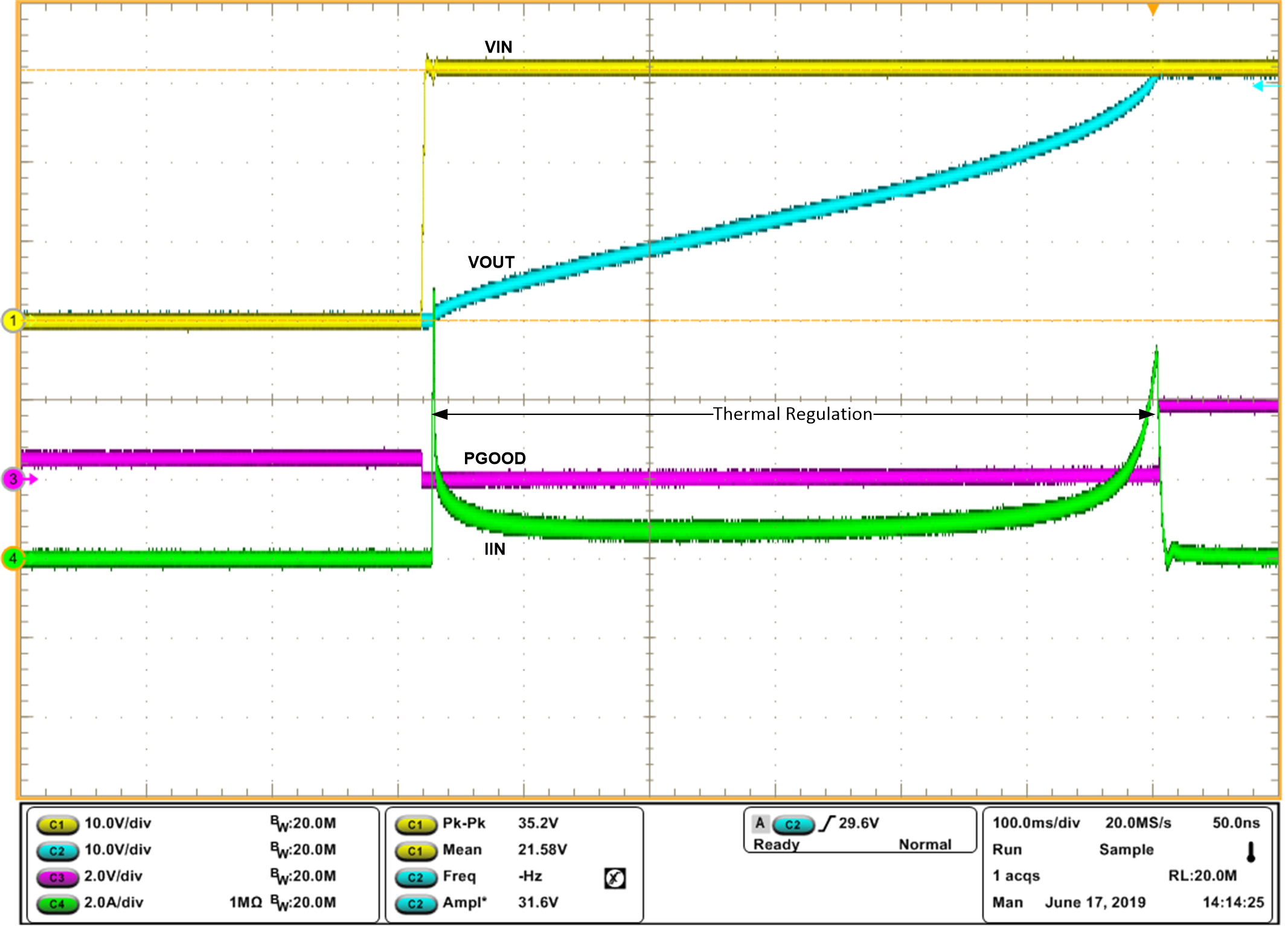SLVAEB9A May 2019 – February 2022 TPS1663 , TPS24710 , TPS24711 , TPS24712 , TPS24713 , TPS2660 , TPS2663
- Trademarks
- 1Introduction
- 2Powering Capacitive Loads with Constant Inrush Current and Output Slew Rate at Start-up
- 3Powering Capacitive Loads with Constant Power Dissipation in Power Switch at Start-up
- 4Powering Capacitive Loads with Thermal Regulation at Start up
- 5Conclusion
- 6References
- 7Revision History
4 Powering Capacitive Loads with Thermal Regulation at Start up
To power large capacitive loads without hiccups, a thermal regulation is required at start-up to prevent the shutdown of the power switch. With thermal regulation at start-up, the power switch regulates the junction temperature less than the thermal shutdown temperature and allows clean start-up with large capacitive loads. The TPS2663 and TPS1663 devices include the thermal regulation at start-up to provide clean start-up with large capacitive loads. Figure 4-1 shows the application circuit with the TPS2663x device.
 Figure 4-1 TPS2663x Application
Circuit
Figure 4-1 TPS2663x Application
Circuit Figure 4-2 Clean Start-up with Thermal
Regulation with COUT = 4.7 mF
Figure 4-2 Clean Start-up with Thermal
Regulation with COUT = 4.7 mFFigure 4-2 shows the clean start-up with 4.7-mF capacitive load for VIN of 32 V.
The device starts with constant inrush current and then goes into thermal regulation
to prevent thermal shutdown and powers up in 65 ms. Without thermal regulation, the
start-up time increases even in the order of minutes for charging large capacitive
loads. In case of unknown capacitive loads, it becomes difficult to select the
appropriate value of inrush current and slew rate for charging output capacitors.
With thermal regulation, the designers can achieve fast and reliable startup without
selecting the appropriate value of inrush current and output slew rate.
With higher capacitive load, the power switch heats
up even faster and thermal regulation is initiated earlier. Figure 4-3 illustrates clean start-up with a capacitive load of 20 mF and VIN of
32 V.
See TPS2663 Design Calculator to design with the TPS2663 and TPS1663 devices.
 Figure 4-3 Clean Start-up with
COUT of 20 mF
Figure 4-3 Clean Start-up with
COUT of 20 mFTable 4-1 lists the charging time with different capacitive loads and ambient temperatures for the TPS2663 and TPS1663 devices.
| TEMPERATURE | |||||
|---|---|---|---|---|---|
| VIN | –40°C | 0°C | 25°C | 105°C | |
| 4.5 V | Charging time | 20.5 ms | 19.9 ms | 20.9 ms | 21 ms |
| Capacitance value | 32 mF | 32 mF | 32 mF | 32 mF | |
| 18 V | Charging time | 287.9 ms | 312.2 ms | 408 ms | 1390 ms |
| Capacitance value | 32 mF | 32 mF | 32 mF | 32 mF | |
| 32 V | Charging time | 1625 ms | 1757 ms | 2144 ms | 2622 ms |
| Capacitance value | 32 mF | 32 mF | 32 mF | 16 mF | |